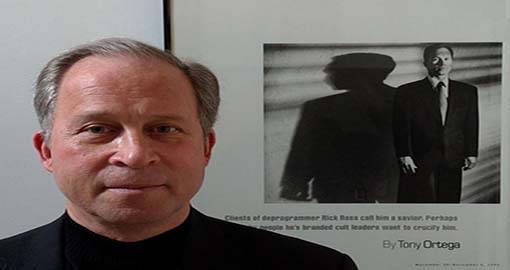A deprogramming scholar believes MEK organization had been close to a cult, an adjective fitting their conduct within the organization and the manipulation of members.Rick Alan Ross is an American deprogrammer, cult specialist, and founder and executive director of the nonprofit Cult Education Institute. He believes the lack of transparency and accountability makes the leaders of cults such as MEK (Mojahedin-e Khalq Organization aka MKO) and ISIL almost insurmountable in their shameful acts of sexual exploitation of members; in such cults, he contend, the personality of the member is dissolved to a greater entity, i.e., the collective spirit which is imbued by the Big Brother mentality who control their thought and action. As such, members of such organizations are prone to extreme mental states edging psychopathy and usually display unconventional belief systems:
In response to the charge of being a cult, the MEK claims that it is actively engaged in political action. In your opinion, can political action alone be a discriminator between cults and other groups?
What the group believes does not define it as a destructive cult, this is instead determined by how the group behaves, its dynamics and structure. The group could be based upon philosophy, politics, religion, therapy, personal growth training seminars, UFOs, pseudo-sciences or martial arts. There are three core characteristics that form the nucleus for a definition of a destructive cult, which I point out in my book “Cults Inside Out” in the chapter “Defining a Destructive Cult.” These three criteria were first identified by psychiatrist Robert Jay Lifton, who wrote the definitive book about thought reform (often called “brainwashing”) and a paper titled “Cult Formation” that was published by Harvard. Lifton defined a cult as having the following three primary characteristics:
1. A charismatic leader, who increasingly becomes an object of worship as the general principles that may have originally sustained the group lose power.
2. A process [is in use] is ‘coercive persuasion’ or ‘thought reform.’
3. Economic, sexual, and other exploitation of group members by the leader and the ruling coterie.
In my opinion, the MEK fits well within the three core criteria often used to define a destructive cult based upon the structure, dynamics and behavior of the group. MEK also uses thought reform and coercive persuasion to gain undue influence over its members.
Are there other criteria to identify cults? Do these features exist in the MEK?
MEK practices conform to all of Lifton’s eight criteria used to identify a thought reform program: Milieu Control, Mystical Manipulation, the Demand for Purity, the Cult of Confession, the “Sacred Science,” Loading the Language, Doctrine over Person, and the Dispensing of Existence.
The MEK members are obliged to attend some meetings, in which they should talk about their thoughts and apologize for their so-called mental deviations. Is this practice common in other cults?
What you describe is detailed again by Lifton in his book “Thought Reform and Psychology of Totalism” in Chapter 22 and in my book within the chapter titled “Cult Brainwashing.” Lifton calls this type of exchange the “Cult of Confession” and I explain within my book how this becomes a device to gain control over and manipulate the follower. It provides intimate information, which can then be used as leverage to break down, manipulate and control the group member.
There are credible reports – including statements by Ms. Soltani, a former member of the MEK leadership who was close to Rajavi- that Rajavi has a variety of scenarios for sexual relationship with the cult’s women. The question is that how Rajvi could do these acts despite being under political pressure and involved in covert actions. How can this behavior be analyzed?
Leaders of authoritarian groups such as MEK or ISIS often sexually exploit members or followers. Leaders have no meaningful accountability. No one can effectively hold them responsible and stop them.
There are some rules within the MEK such as degrading of men and putting women in top of organizational positions, e.g. appointing Maryam Ghajar Azdanlou (later Maryam Rajavi) as President-elect of Iran, pretended as progressives and feminist acts. Do you accept that those acts are progressive? Are these rules exclusive to the MEK?
Whatever the rules are within MEK is not the point. What is relevant is that the Rajavis can make new rules, change rules and do whatever they want. Their rules are typically used to manipulate and control their followers. They like what they control and don’t like what they don’t control. The Rajavis then use that undue influence to exploit and manipulate MEK members for their own benefit and financial gain.
Would you please speak more about Rajavis?
Rajavi and his wife are the defining role of authoritarian charismatic leadership that has become the focus, defining element and driving force of MEK. There are no checks and balances to their power, meaningful accountability or transparency.
Mehr News and Habilain Association,

